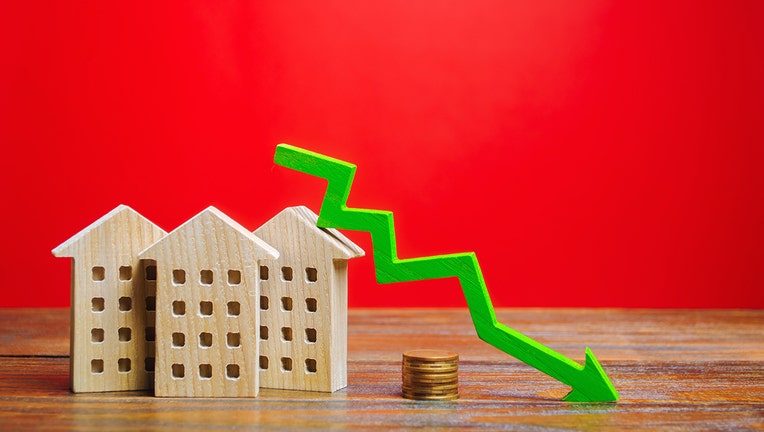Could 2% mortgage rates be the new normal?

Consumers are benefitting from historically low mortgage rates, but will interest rates stay that low? Learn how you can take advantage of 2% mortgage rates while they last. (iStock)
Over the past year, mortgage rates have reached historic lows due to the ongoing coronavirus pandemic. In March 2020, the average rate for a 30-year mortgage started to drop, and it continued to fall through the end of the year. In August, rates fell to below 3%, and in December 2020, they hit an all-time low of 2.68%. Before this past year, the lowest recorded mortgage rate was 3.35% in 2012.
With loan rates this low, questions surrounding the housing market have become inevitable. Many experts anticipate that mortgage rates will rise above 3% in 2021, but this would still be considered a very low rate. How can homebuyers take advantage of these historically low rates? You can visit an online mortgage broker like Credible to compare rates, choose your loan term, and get preapproved with multiple lenders.
Could 2% mortgage rates be the new normal?
The U.S. economy is slowly starting to recover from the pandemic, which has led many people to wonder if mortgage rates will remain low for the rest of 2021. Could 2% mortgage rates be the new normal, or will interest rates rise as the economy begins to bounce back?
Most market experts think its unlikely rates will stay at 2% for the rest of the year. Rates are already starting to creep back toward 3% for a variety of reasons. The Democrats in the House and Senate have indicated plans to pass additional stimulus measures to improve the economy. Assuming the economy continues to improve, the Fed may end the current rate-reducing programs. The Fed's decision affects mortgage rates and mortgage lenders. And mortgage rates may rise slightly due to inflation fears. In short: if you want to purchase a new home - or refinance your mortgage - now may be the best time to get that lower mortgage payment.
When will mortgage rates go up?
According to Freddie Mac, 30-year mortgage rates are currently at 3.02%. This is an increase from 2.65% in January. So as you can see, mortgage rates are already starting to rise. But will low levels remain in the mortgage rates forecast?
It’s impossible to know whether these record low rates will stick around, so homeowners should look for opportunities to take advantage of them while they last. If rates rise a few percentage points, it may not seem like much, but it can add hundreds of dollars to your monthly mortgage payments.
Refinancing can be a great way to save money and shorten the terms of your mortgage. Refinance rates are hovering around record lows. Of course, this depends on your credit history and current mortgage rates. If you’re looking to refinance, then using a lending marketplace like Credible can make the process easier.
Should I refinance my mortgage now?
Because mortgage refi rates are so low, homeowners could save thousands of dollars by refinancing. You can use an online mortgage refinance calculator to determine your new monthly costs and see how much you could save by refinancing.
There are many benefits of refinancing, including:
- Saving money on your monthly payments
- Lowering the total amount you pay in interest over the life of the loan
- Moving from an adjustable-rate mortgage (ARM) to a fixed-rate mortgage
- Lowering your mortgage terms so you can pay it off sooner
If you’re interested in receiving prequalified rates without it affecting your credit score, you should check out Credible. After a short application process, Credible will show you competitive rates from multiple lenders so you can see if refinancing is the right option for you.
Homeowners taking out a new mortgage
Borrowers are currently enjoying 2% mortgage rates, so now is also an excellent time to consider refinancing. However, refinancing alone isn’t going to save you money -- you need to choose the right lender. Many homeowners assume they have to refinance with a local bank or credit union, but these are not the only options to refinance your mortgage.
When you refinance, you’re essentially replacing your current mortgage with a new loan. This means you’ll have to pay closing costs, which range between 3% and 6% of the total cost of the mortgage. And some lenders charge hefty fees, like application fees, origination fees, and prepayment penalties.
If you aren’t careful, these fees can quickly add up and eliminate many of the cost-saving benefits of refinancing. The best way to explore your options is by visiting Credible to compare rates and lenders.
The bottom line
30-year mortgage rates are currently hovering around historic lows, but they may not stay that low forever. If you’ve been considering refinancing your mortgage, then now is an excellent time to get the process started. Do some research and find out what kind of rates you can qualify for, and make sure to compare offers from different lenders.

